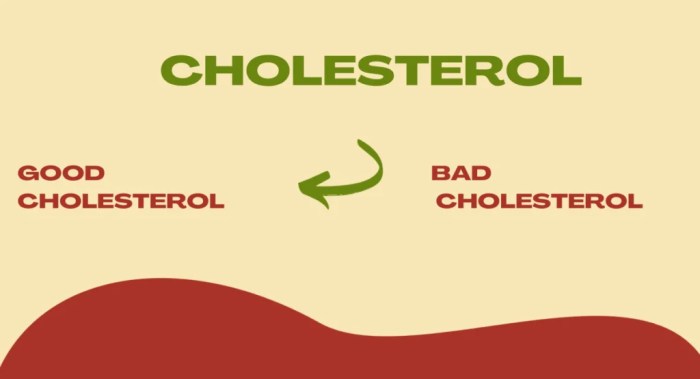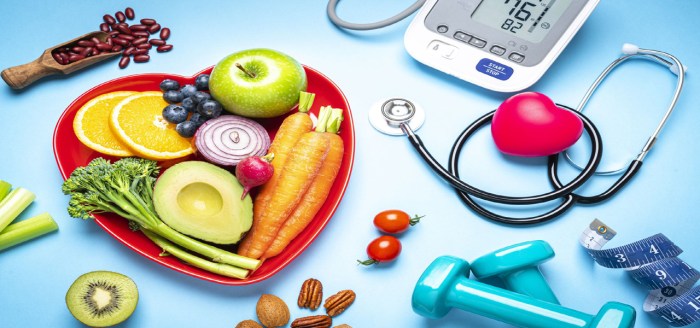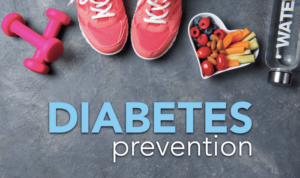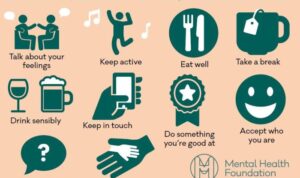Cholesterol management is key to a healthy lifestyle, so let’s dive into how you can take control of your cholesterol levels and overall well-being. From understanding the basics to making impactful lifestyle changes, we’ve got you covered.
Understanding Cholesterol

Cholesterol is a waxy, fat-like substance found in every cell of our body. It plays a crucial role in building cell membranes, producing hormones, and aiding in digestion.
LDL (Bad) Cholesterol vs. HDL (Good) Cholesterol
- LDL cholesterol, often referred to as “bad” cholesterol, can build up in the walls of arteries, leading to atherosclerosis and increasing the risk of heart disease.
- HDL cholesterol, known as “good” cholesterol, helps remove LDL cholesterol from the arteries and transports it to the liver for excretion.
- Maintaining a balance between LDL and HDL cholesterol levels is essential for reducing the risk of heart disease and maintaining overall health.
Importance of Managing Cholesterol Levels
- High levels of LDL cholesterol can lead to the formation of plaques in the arteries, restricting blood flow and increasing the risk of heart attacks and strokes.
- Monitoring cholesterol levels through regular blood tests and making lifestyle changes, such as eating a healthy diet and exercising, can help prevent heart disease.
- Medications may also be prescribed by healthcare providers to help lower cholesterol levels in individuals at high risk of cardiovascular events.
Risk Factors for High Cholesterol

High cholesterol levels can be influenced by a variety of factors, both controllable and uncontrollable. Understanding these risk factors is crucial in managing cholesterol levels effectively.
Lifestyle Factors Impacting Cholesterol Levels
- Poor Diet: Consuming foods high in saturated fats, trans fats, and cholesterol can raise LDL (bad) cholesterol levels.
- Lack of Exercise: Sedentary lifestyles can lead to weight gain and lower HDL (good) cholesterol levels.
- Smoking: Tobacco use can lower HDL cholesterol levels and damage blood vessels, increasing the risk of plaque buildup.
Genetics and Family History, Cholesterol management
Genetics can play a significant role in determining cholesterol levels, as some individuals may inherit genes that contribute to high cholesterol. Additionally, having a family history of high cholesterol or heart disease can increase an individual’s risk.
Diet and Nutrition for Cholesterol Management
To manage cholesterol levels effectively, it is essential to focus on a healthy diet and nutrition plan. By incorporating specific foods and making smart choices, you can lower LDL cholesterol and improve overall heart health.
Foods that can help lower LDL cholesterol
- Oats: Rich in soluble fiber, oats can help reduce LDL cholesterol levels.
- Nuts: Almonds, walnuts, and other nuts are high in healthy fats that can lower cholesterol.
- Fatty fish: Salmon, mackerel, and sardines are packed with omega-3 fatty acids, which can improve cholesterol levels.
- Fruits and vegetables: Berries, apples, oranges, spinach, and kale are all excellent choices for lowering cholesterol.
- Legumes: Beans, lentils, and chickpeas are high in fiber and can help lower cholesterol.
Benefits of a diet rich in fruits, vegetables, whole grains, and healthy fats
Eating a diet that includes fruits, vegetables, whole grains, and healthy fats can have numerous benefits for cholesterol management. These foods are high in fiber, antioxidants, and essential nutrients that can help reduce inflammation, improve heart health, and lower LDL cholesterol levels.
Impact of saturated fats, trans fats, and dietary cholesterol on cholesterol levels
- Consuming saturated fats found in red meat, full-fat dairy products, and fried foods can raise LDL cholesterol levels.
- Trans fats found in processed and fried foods can also increase LDL cholesterol and lower HDL cholesterol levels.
- Dietary cholesterol from animal products like eggs and shellfish can impact cholesterol levels, but the effect varies from person to person.
Exercise and Physical Activity: Cholesterol Management
Regular exercise plays a crucial role in managing cholesterol levels by increasing HDL (good) cholesterol and lowering LDL (bad) cholesterol. Physical activity helps improve heart health and overall well-being.
Types of Physical Activities
- Cardiovascular exercises such as jogging, swimming, cycling, and aerobics can help increase HDL cholesterol levels.
- Strength training and weightlifting can also contribute to lowering LDL cholesterol.
- Engaging in activities like yoga or Pilates can help reduce stress, which in turn can positively impact cholesterol levels.
Benefits of Exercise for Cholesterol Levels
Regular physical activity can:
- Help raise HDL cholesterol levels.
- Lower LDL cholesterol levels.
- Improve overall cardiovascular health and reduce the risk of heart disease.
Medications for Cholesterol Management
When it comes to managing high cholesterol, medications can play a crucial role in lowering cholesterol levels and reducing the risk of heart disease. One common type of medication prescribed for high cholesterol is statins, which work to lower cholesterol levels in the blood.
Statins: How They Work
Statins are a class of drugs that help lower cholesterol levels by blocking a substance your liver needs to make cholesterol. They also help your body reabsorb cholesterol that has built up in plaques on your artery walls, ultimately reducing the amount of cholesterol in your bloodstream.
- Statins are highly effective in lowering LDL (bad) cholesterol levels and reducing the risk of heart attacks and strokes.
- They can also help increase levels of HDL (good) cholesterol in some cases.
- Commonly prescribed statins include atorvastatin (Lipitor), simvastatin (Zocor), and rosuvastatin (Crestor).
It’s important to take statins as prescribed by your healthcare provider and to monitor for any potential side effects.
Potential Side Effects and Risks
While statins are generally well-tolerated by most people, they can come with some potential side effects and risks. These may include:
- Muscle pain or weakness
- Liver damage
- Increased blood sugar levels
- Memory loss or confusion
It’s important to discuss any concerns or side effects with your doctor to determine the best course of action for your cholesterol management.
Lifestyle Changes and Cholesterol Management
Making lifestyle changes is crucial for improving cholesterol levels and overall heart health. By incorporating healthy habits into your daily routine, you can effectively manage your cholesterol levels and reduce your risk of heart disease.
Importance of Weight Management
Weight management plays a significant role in cholesterol management. Excess weight, especially around the abdomen, can lead to higher levels of LDL (bad) cholesterol and lower levels of HDL (good) cholesterol. By maintaining a healthy weight through a balanced diet and regular exercise, you can improve your cholesterol profile and reduce your risk of heart disease.
Stress Reduction Strategies
Chronic stress can contribute to high cholesterol levels and increase the risk of heart disease. Implementing stress-reduction techniques such as meditation, yoga, deep breathing exercises, or engaging in hobbies can help lower stress levels and improve overall heart health.
Long-Term Success in Cholesterol Management
For long-term success in maintaining healthy cholesterol levels, it’s essential to establish sustainable habits. This includes following a heart-healthy diet rich in fruits, vegetables, whole grains, and lean proteins, staying physically active, managing stress effectively, and avoiding smoking. Regular monitoring of cholesterol levels through blood tests and working closely with your healthcare provider can help track progress and make necessary adjustments to your lifestyle.





